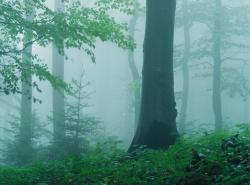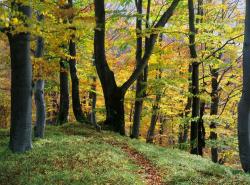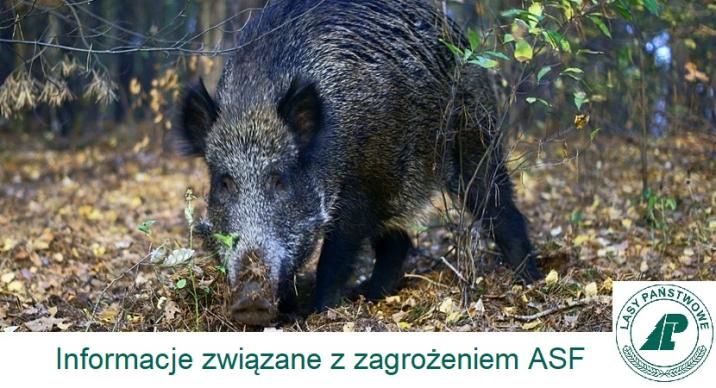 Asset Publisher
Asset Publisher
The State Forests National Forest Holding
The State Forests National Forest Holding is the largest organisation in the European Union managing forests, which belong to the State Treasury and celebrating its 90 anniversary this year.
Presently, we manage the area of one third of Poland's territory. Not long after the end of the Second World War, there was only 21 % of the area. Every year we plant 500 million of new trees, as we want Polish forests grow all the time.
Every year Polish foresters plant 500 million of trees.
85 % of nature reserves in Poland are located within the State Forests. 40 % of the forests managed by General Directorate of the State Forests are protected within the framework of European network Natura 2000. We fight against many threats: natural disasters, plaques of insects, trees' diseases, fires, pollutions, as well as poaching and vandalism.
We take care the forestry supplying the market with timber, as ecological and universal material, to be carried on in accordance with rules of balanced development (photography P.Fabjański).
One of our major tasks is making forests accessible to the society. We invite you to take advantage of these beautifully located within the forest wilderness holiday resorts, forester's lodges or guest rooms. That is for you, we create thousand kilometres of hiking trails, cycling paths or camping sites. All the above mentioned, you can find in service www.czaswlas.pl.
We also take care the forestry supplying the market with timber, as ecological and universal material, to be carried on in accordance with rules of balanced development. We obtain over 30 million of cubic meters of wood annually, twice as much as at the beginning of the nineties of the XX century.
Despite of this, the average of wood abundance per hectare of our forests is one fourth bigger than 20 years ago and 40% bigger than the average of European Union currently amounts.
In Poland in sectors connected with the forestry, there work about 375 thousand of people. It means that each 40 working Pole works in the forest.
In Poland in sectors connected with the forestry, there work about 375 thousand of people. It means that each 40 working Pole works in the forest. The sector of wood processing works out approximately 8 % of our GDP (Gross Domestic Product). Among others, thanks to the timber from the State Forests Poland is the 10 largest producer of furniture in the world, and the 4 largest furniture exporter.
The State Forests employ 25 thousand people. That way we are the 9 biggest employer in Poland. Among the largest companies in our country it takes 22 place in respect of its incomes and 11 place in respect of its profits. The value of assets, we manage, reaches 300 million zl. If we add social values, it will be worth one billion zlotych. We do not use money from the budget, but we earn money on our own to support the business. In spite of the financial crisis, since 2002, we continuously note down profits. Moreover, we pay taxes amounting 1,3 billion zl annually.
87 % of Poles think, the foresters are competent. We willingly share our knowledge of Polish forests, of their history and of nature values with the others. We publish books, periodicals, brochures; we also administer the website www.lasy.gov.pl . For children, the youth and teachers, we prepared internet service "E-lynx' Lynx Forest" (www.erys.pl). Our staff has supported schools in field of nature education for years. We also organise many actions to let people broaden their knowledge about forest, nature and ecology.
 Asset Publisher
Asset Publisher
Informacje związane z zagrożeniem ASF
Informacje związane z zagrożeniem ASF
W związku z występowaniem ASF w Polsce i potwierdzeniem w 2019 roku przypadków afrykańskiego pomoru świń na terenie województwa lubuskiego przypominamy, że ASF to groźna choroba wirusowa, na którą chorują wyłącznie świnie i dziki. Ludzie nie są wrażliwi na zakażenie wirusem ASF. Występowanie ASF wśród dzików stanowi jednak bardzo poważne zagrożenie dla trzody chlewnej. Ponieważ wirus ASF może przez długi czas utrzymywać się w zwłokach padłych dzików, ważne jest ich usuwanie ze środowiska. Poniżej znajdują się informacje opracowane w Głównym Inspektoracie Weterynarii dotyczące postępowania w przypadku znalezienia padłego dzika oraz zachowania w lesie.
Jak postępować po znalezieniu padłego dzika?
-
jeżeli to możliwe, oznakować miejsce znalezienia zwłok dzika w celu ułatwienia ich odnalezienia przez właściwe służby;
-
powstrzymać się od dotykania zwłok dzika i pozostawić je w miejscu znalezienia. Nie należy zbliżać się do miejsca znalezienia zwłok;
-
zgłosić fakt znalezienia padłego dzika do właściwego miejscowo powiatowego lekarza weterynarii lub najbliższej lecznicy weterynaryjnej lub straży miejskiej lub miejscowego koła łowieckiego lub starostę, burmistrza, wójta gminy: w trakcie zgłoszenia należy podać miejsce znalezienia zwłok (np. charakterystyczne punkty orientacyjne lub współrzędne GPS), dane osoby zgłaszającej (w tym numer telefonu kontaktowego), liczbę znalezionych zwłok dzików w danym miejscu, ewentualnie stan zwłok padłych dzików (stan ewentualnego rozkładu, wyłącznie kości);
W związku z zagrożeniem ASF:
-
w lesie nie wolno pozostawiać żadnych odpadków żywnościowych;
-
należy powstrzymać się od wywoływania hałasu, który powoduje płoszenie dzików (w tym używania sprzętów lub pojazdów powodujących hałas);
-
nie spuszczać psów ze smyczy;
-
należy pamiętać, iż zgodnie z prawem, na obszarach występowania ASF, osobom mającym kontakt z dzikami nakazuje się stosowanie środków higieny niezbędnych do ograniczenia ryzyka szerzenia się ASF, w tym odkażanie rąk i obuwia. Po powrocie do domu należy starannie wyczyścić i dezynfekować obuwie , a odzież przeznaczyć do prania;
-
należy przestrzegać zasady, że osoba, która znalazła padłego dzika, a tym samym mogła mieć kontakt z wirusem ASF, przez 72 godziny po tym fakcie, nie powinna wchodzić do miejsc, w których utrzymywane są świnie i nie wykonywać czynności związanych z obsługą świń.
Więcej informacji dotyczących afrykańskiego pomoru świń, zasad bioasekuracji, a także aktualna mapa obszaru występowania ASF znajduje się na stronie Głównego Inspektoratu Weterynarii.


 fot. Paweł Fabijański
fot. Paweł Fabijański
 fot. Paweł Fabijański
fot. Paweł Fabijański
 fot. Paweł Fabijański
fot. Paweł Fabijański



